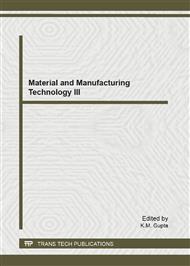p.719
p.724
p.730
p.735
p.740
p.744
p.749
p.753
p.758
A Combinatorial Classifier for Error-Data in Joining Processes with Diverse-Granular Computing
Abstract:
In this paper, we present a novel hybrid classification model with fuzzy clustering and design a newly combinatorial classifier for error-data in joining processes with diverse-granular computing, which is an ensemble of a naïve Bayes classifier with fuzzy c-means clustering. And we apply it to improve classification performance of traditional hard classifiers in more complex real-world situations. The fuzzy c-means clustering is applied to a fuzzy partition based on a given propositional function to augment the combinatorial classifier. This strategy would work better than a conventional hard classifier without fuzzy clustering. Proper scale granularity of objects contributes to higher classification performance of the combinatorial classifier. Our experimental results show the newly combinatorial classifier has improved the accuracy and stability of classification.
Info:
Periodical:
Pages:
740-743
Citation:
Online since:
July 2012
Authors:
Price:
Сopyright:
© 2012 Trans Tech Publications Ltd. All Rights Reserved
Share:
Citation:


